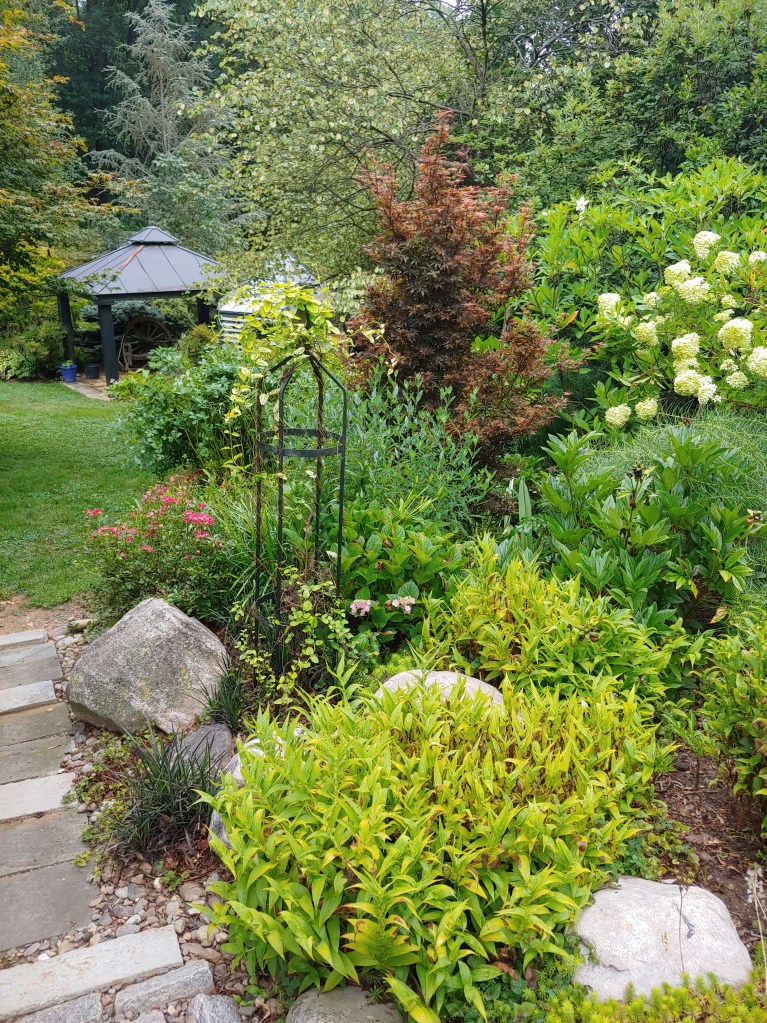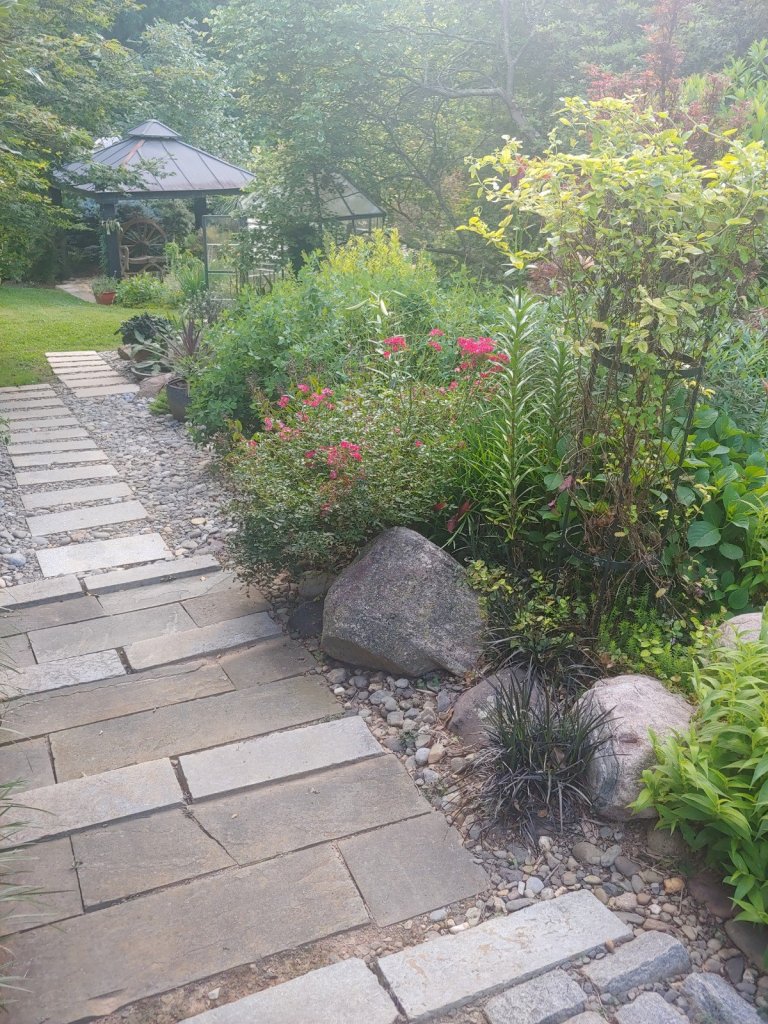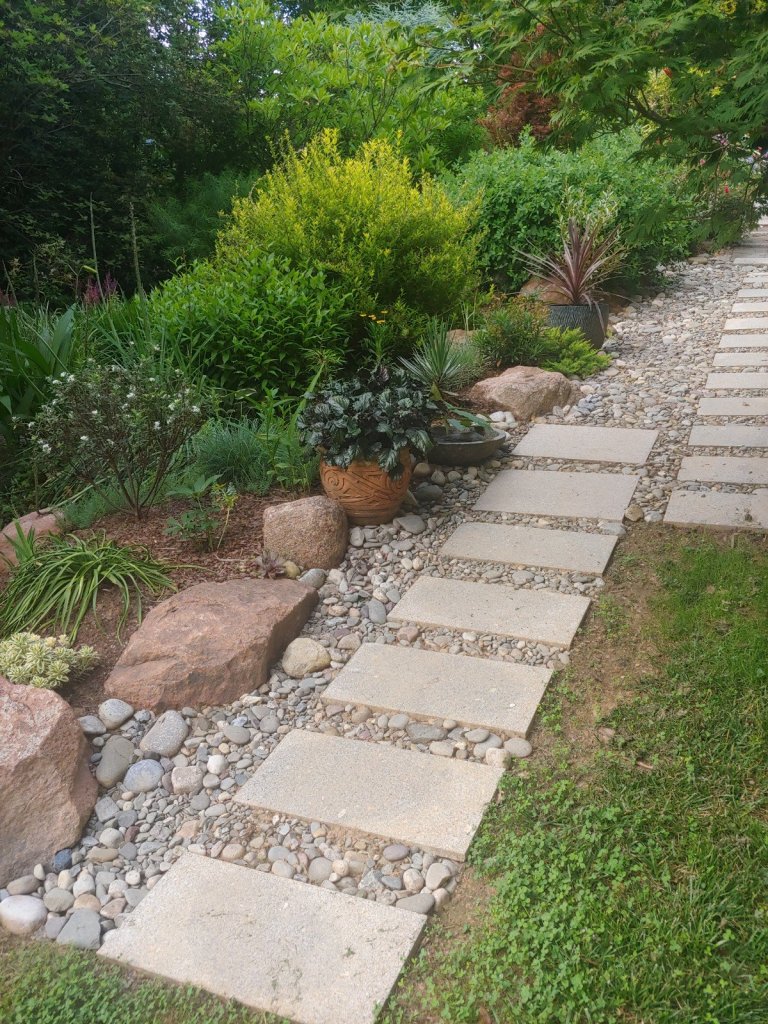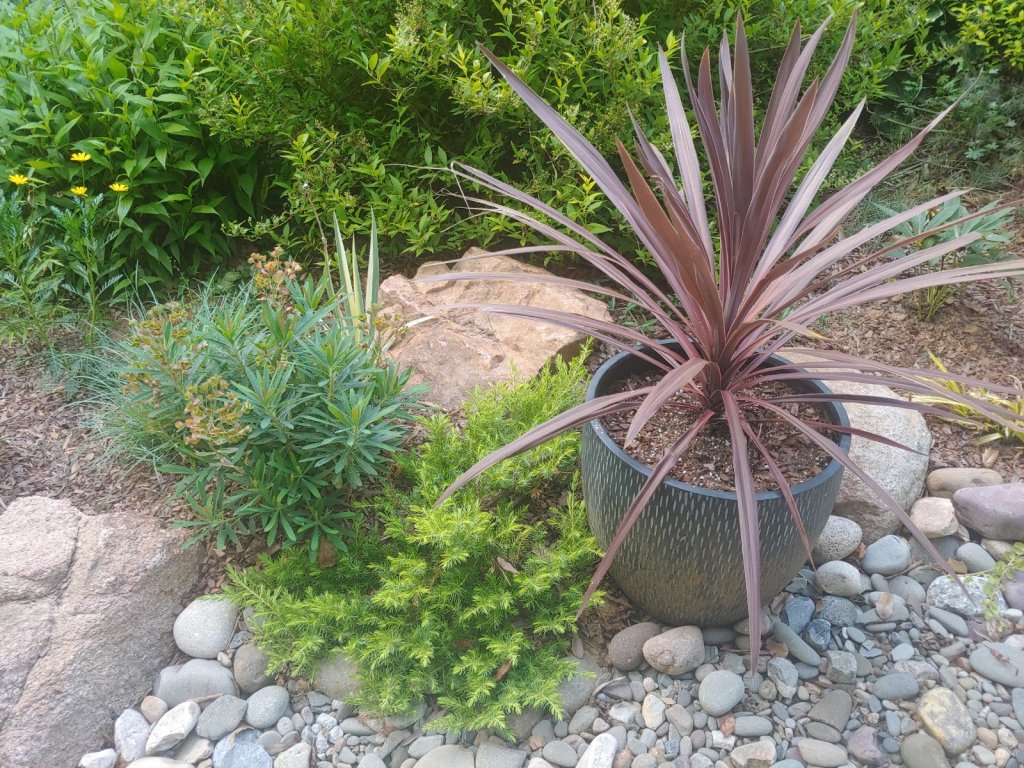By late in the past year the passageway from the driveway to the rear garden had deteriorated into a muddy mess. What was once lawn, though hardly a good one, had become mostly shallow rooted clover with the slope becoming increasingly slick when wet. More than a few times I slipped with an armload of something, and while I didn’t go down this isn’t a particularly safe thing for a guy with metal plates and screws holding together significant body parts.


I considered flagstone placed in grass (clover), but thought the sparse cover of green might decline further. I don’t care for any more paved surfaces than are necessary, so I stumbled upon the idea to lay granite pavers bordered by porous gravel, then to widen the planted area to join the gravel so that plants overlapped and softened the transition of paving to gravel to planting. Months after, I’m fighting a few weeds coming up in the gravel, but the mud’s gone, and I’m delighted by the new planting. Okay this year, better next year.

I don’t know if this will end up being a thrill or a nuisance, but I’ve planted two very marginally cold hardy evergreens here, a schefflera (Schefflera delavayi) and grevillea (Grevillea ‘Murray Valley Queen’) that I long considered without a good spot for them. I assume, of course, that all winters to come will match the past two that have been zone 8b temperatures instead of our typical 7a dropping to near zero (Fahrenheit). But maybe not, and possibly I’ll need to protect the two marginal evergreens if the climate has not changed so drastically.

Three tender mangaves are likely to be dug and stored again in the unheated greenhouse for the winter. A year ago this was done without a problem, though I did move them into the basement when temperatures dropping below ten degrees were forecast.
I planted a daphne, the first I’ve tried in full sun, moved to the front some young, yellow flowered hellebores that would be lost behind the new planting, and filled in with a variety of sedums, a few euphorbias, and newly purchased toad lilies (Tricyrtis). Several orchids were divided and planted above granite boulders that edge the gravel. Two pots were moved from one of the patios along with a stone basin that was lost in a jungle of foliage at the edge of one of the ponds.
I think it’s good, and figure that if the schefflera and grevillea survive, and if the mangaves tolerate once a year digging, I’ll be overjoyed a year from now. If the marginal shrubs don’t make it, I’ve started over before, so what’s new?

The footing is good on the slightly coarse granite pavers, even when wet, and while I’m not overly enthused by the gravel, the area needed to be wide enough for a mower to get to the small sections of lawn in the back. I’ll encourage the sedums and a yellow tipped juniper to spread over the gravel, knowing that the mowing guys will stomp on it and damaged parts will need to be cut out regularly.
Branches of the fern leaf Japanese maple (Acer japonicum ‘Aconitifolium’) stray too far and low over the path, so once the new plantings spread a bit I’ll prune the maple. Otherwise, the area looks a little too “designed” at the moment, but it won’t be long before this is as chaotic as the rest of the garden.
“Several orchids were divided and planted above granite boulders that edge the gravel.”
What orchids? Bletilla? Cyps? Tipularia?
The divided orchids were calanthe and bletilla that do well in mostly full sun.
Wow, Calanthe in full sun? I always thought them more as shade plants. I’m guessing they are kept moist?
Nothing here is irrigated, but the soil is decent. They are out of the late afternoon sun, but out of several groups, ones with more sun are noticeably happier.